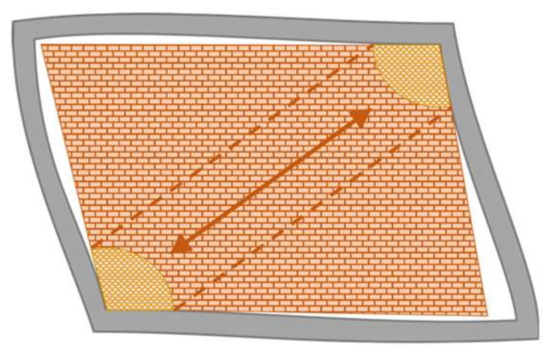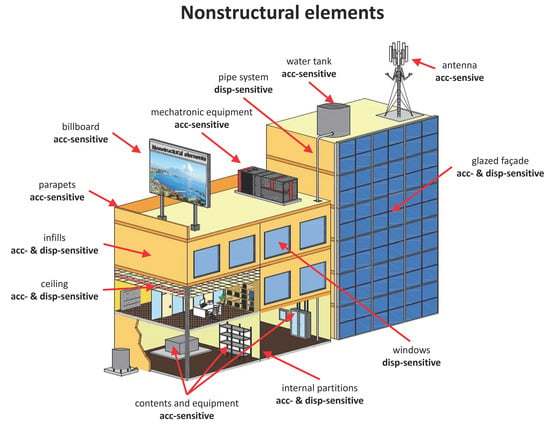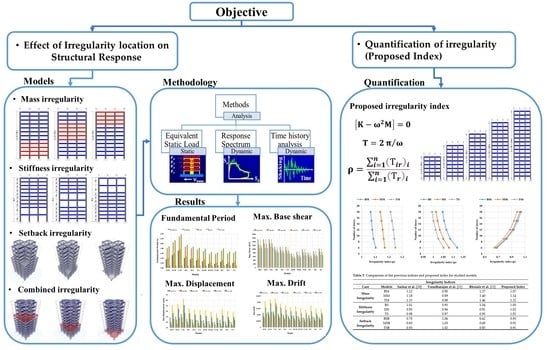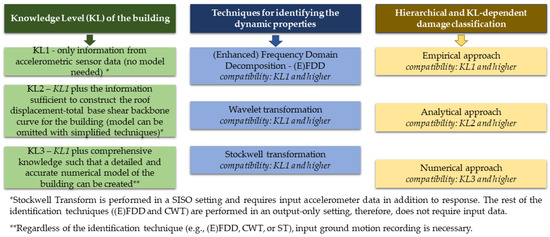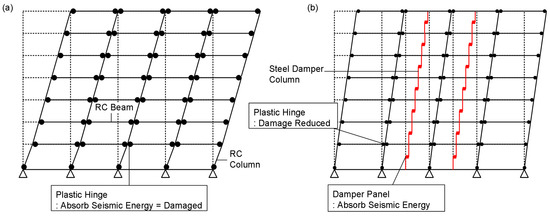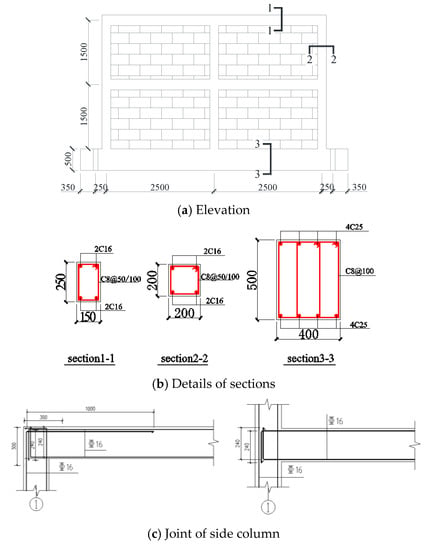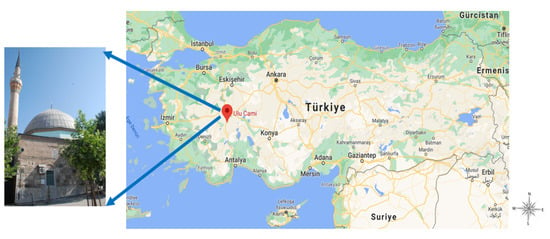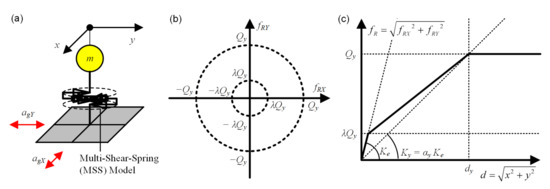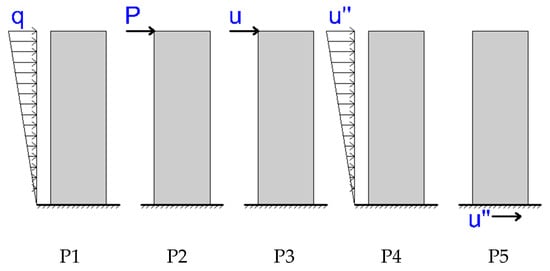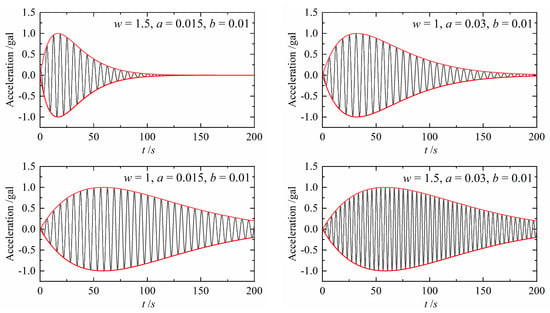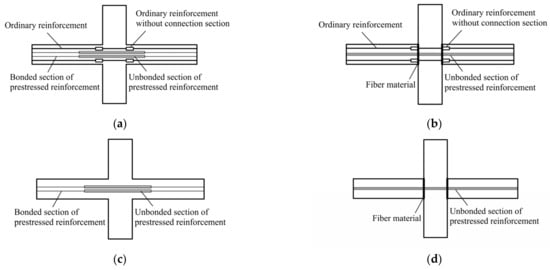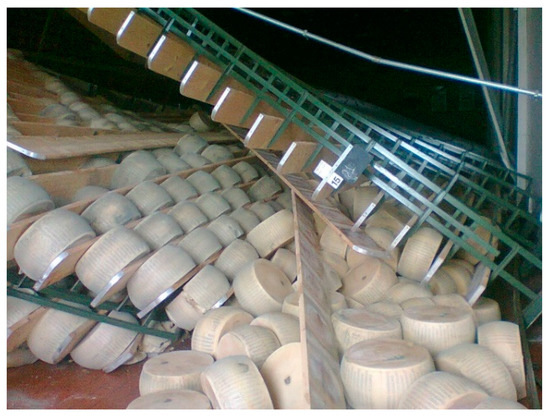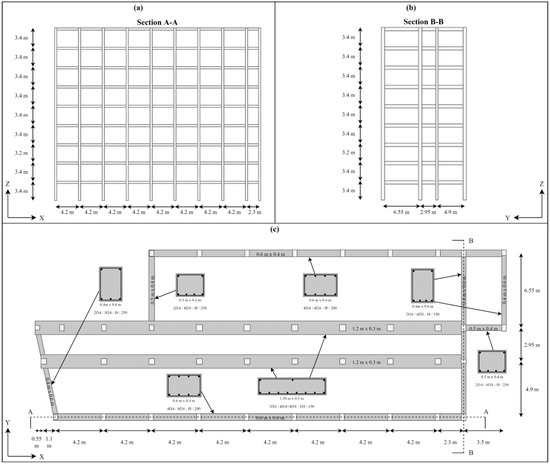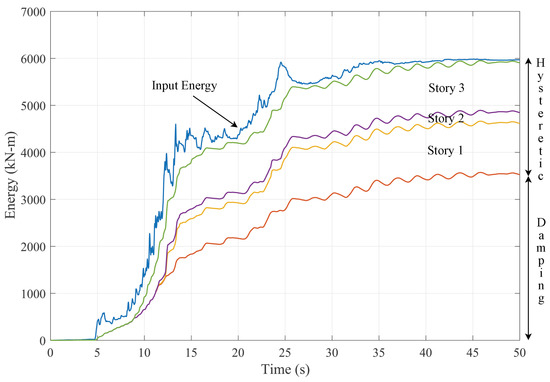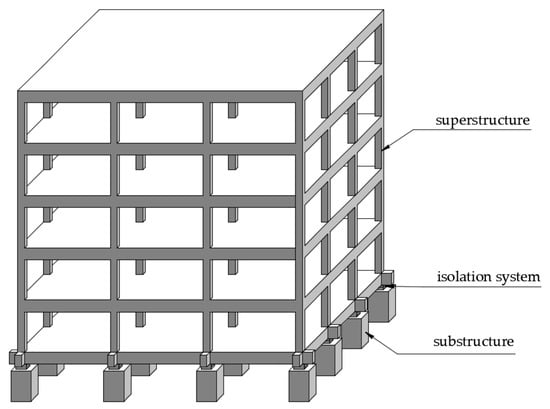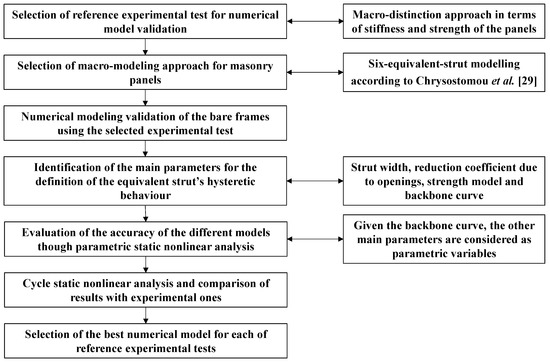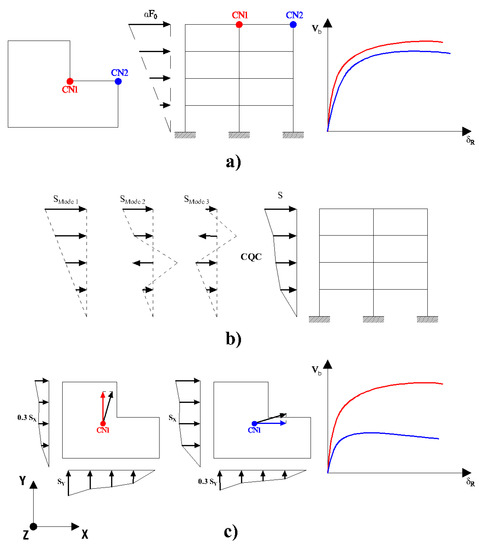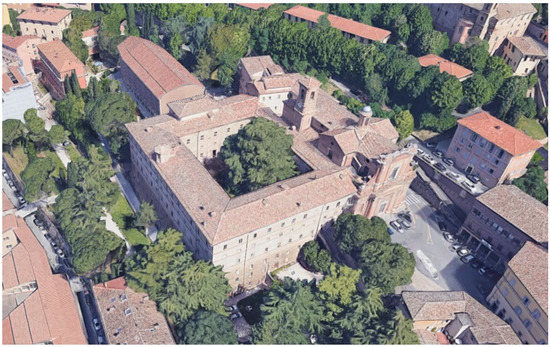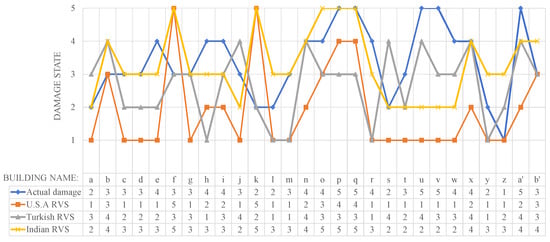Structural Analysis for Earthquake-Resistant Design of Buildings
Share This Topical Collection
Editors
 Dr. Daniele Perrone
Dr. Daniele Perrone
 Dr. Daniele Perrone
Dr. Daniele Perrone
E-Mail
Website
Collection Editor
Department of Engineering for Innovation, University of Salento, Lecce, Italy
Interests: performance-based earthquake engineering; seismic design and analysis of structural and non-structural elements; experimental testing
 Dr. Emanuele Brunesi
Dr. Emanuele Brunesi
 Dr. Emanuele Brunesi
Dr. Emanuele Brunesi
E-Mail
Website
Collection Editor
Department of Construction and Infrastructure, Fondazione Eucentre, 27100 Pavia, Italy
Interests: advanced numerical modelling for structural analysis; progressive collapse; seismic design and analysis of structures; experimental testing
Special Issues, Collections and Topics in MDPI journals
Topical Collection Information
Dear Colleagues,
We are pleased to invite you for a contribution to the Topical Collection "Structural Analysis for Earthquake-Resistant Design of Buildings".
Earthquake-resistant buildings are generally designed using elastic analysis methods and simplified numerical models. However, it is not surprising that buildings experience significant inelastic behavior if subjected to medium-strong earthquakes. Modern performance-based design methods require detailed structural analysis to investigate the actual behaviour of structures under such conditions. The advancements in computational methods and the increasing availability of experimental test data allow one to perform an advanced structural analysis in order to assess the structural response beyond the elastic range, including the effects of strength and stiffness degradation, infill walls, large displacements, and all inelastic phenomena that could affect the seismic response of a building up to collapse.
In light of these considerations, this Topical Collection aims at stimulating the exchange of ideas and knowledge on recent advances in structural analysis methods and numerical modelling approaches for the seismic design and assessment of buildings, involving fully deterministic and probabilistic applications/frameworks. Original contributions containing fundamental and applied research, case studies, or state of the art are encouraged to be submitted to the Topical Collection.
Dr. Daniele Perrone
Dr. Emanuele Brunesi
Collection Editors
Manuscript Submission Information
Manuscripts should be submitted online at www.mdpi.com by registering and logging in to this website. Once you are registered, click here to go to the submission form. Manuscripts can be submitted until the deadline. All submissions that pass pre-check are peer-reviewed. Accepted papers will be published continuously in the journal (as soon as accepted) and will be listed together on the collection website. Research articles, review articles as well as short communications are invited. For planned papers, a title and short abstract (about 100 words) can be sent to the Editorial Office for announcement on this website.
Submitted manuscripts should not have been published previously, nor be under consideration for publication elsewhere (except conference proceedings papers). All manuscripts are thoroughly refereed through a single-blind peer-review process. A guide for authors and other relevant information for submission of manuscripts is available on the Instructions for Authors page. Buildings is an international peer-reviewed open access monthly journal published by MDPI.
Please visit the Instructions for Authors page before submitting a manuscript.
The Article Processing Charge (APC) for publication in this open access journal is 2600 CHF (Swiss Francs).
Submitted papers should be well formatted and use good English. Authors may use MDPI's
English editing service prior to publication or during author revisions.
Keywords
- Structural analysis
- Earthquake engineering
- Seismic design and assessment of buildings
- Deterministic and probabilistic analysis methods
- Earthquake-induced progressive collapse simulations
- Numerical modelling vs. experimental data
- Advanced numerical modelling of structures.
Published Papers (24 papers)
Open AccessReview
Macro-Modelling of IP-OoP Interaction in Unreinforced Solid Masonry Infills under Earthquake-Induced Actions: A Review
by
Soheil Rostamkalaee, Simone Peloso and Emanuele Brunesi
Viewed by 1034
Abstract
Unreinforced masonry-infilled reinforced concrete frames are a prevalent taxonomy class not only in the Mediterranean region but also in Europe and worldwide, where buildings of this type abound or are ubiquitous. Thus, somewhat expectedly, various earthquake events and sequences have repeatedly shown the
[...] Read more.
Unreinforced masonry-infilled reinforced concrete frames are a prevalent taxonomy class not only in the Mediterranean region but also in Europe and worldwide, where buildings of this type abound or are ubiquitous. Thus, somewhat expectedly, various earthquake events and sequences have repeatedly shown the poor seismic behaviour of masonry infill walls, which, in turn, have brought into question issues of the variability, uncertainty, and interaction of in-plane (IP) and out-of-plane (OoP) responses. The latter aspect is examined in this paper, which provides a systematic review concerning the conceptualisation and development of numerical macro-models for simulating the behaviour of solid infill wall panels taking their IP–OoP interaction into account. To this end, the most important parameters involved in the cyclic behaviour of unreinforced solid masonry infill walls are addressed first, and then the main models currently available in the literature are scrutinised and key features discussed, with emphasis posed on issues of accuracy/suitability and easiness or level of complexity/sophistication.
Full article
►▼
Show Figures
Open AccessArticle
Seismic Assessment and Retrofit of Pre-Northridge High Rise Steel Moment Resisting Frame Buildings with Bilinear Oil Dampers
by
Sarven Akcelyan and Dimitrios G. Lignos
Cited by 1 | Viewed by 1679
Abstract
This paper presents quantitative information on the effectiveness of seismic retrofit solutions using bilinear oil dampers for seismically deficient existing tall steel buildings. For this purpose, a benchmark 40-story steel space moment-resisting frame building is studied that represents 1970s design practice in North
[...] Read more.
This paper presents quantitative information on the effectiveness of seismic retrofit solutions using bilinear oil dampers for seismically deficient existing tall steel buildings. For this purpose, a benchmark 40-story steel space moment-resisting frame building is studied that represents 1970s design practice in North America. Rigorous seismic performance assessment based on ASCE 41 recommendations reveals a high collapse risk for the existing building. The local engineering demand parameters are comprehensively assessed to quantify the impact of seismic retrofit on steel columns and column splices, which are particularly vulnerable due to the time of construction. Multiple retrofit schemes are explored with numerous damping levels and vertical damping distribution methods. The dampers are designed via a recently developed multi-degree-of-freedom performance curves method. A new balanced vertical damping method is proposed to account for the effects of frame inelasticity. This strongly depends on the supplemental damping level, and it determines the effectiveness of the employed vertical damping distribution method. The results indicate that the proposed retrofit strategies can minimize the collapse risk of the tall building. It is shown that the balanced vertical damping distribution method provides the most uniform drift distribution along the building height. Despite the reduction in story drift ratios, the axial force demand in exterior columns remains relatively high in the bottom stories regardless of the seismic retrofit solution. On the other hand, bilinear oil dampers produce relative constant forces despite exhibiting higher velocity demands than expected.
Full article
►▼
Show Figures
Open AccessReview
Experimental Seismic Assessment of Nonstructural Elements: Testing Protocols and Novel Perspectives
by
Martino Zito, Roberto Nascimbene, Paolo Dubini, Danilo D’Angela and Gennaro Magliulo
Cited by 11 | Viewed by 4144
Abstract
Nonstructural elements (NEs) are generally defined as elements typically housed within buildings/facilities that are not part of the structural system. Nonstructural elements are often classified as architectural elements, mechanical/electrical/hydraulic systems, and building contents. Nonstructural elements are often associated with critical seismic risk, due
[...] Read more.
Nonstructural elements (NEs) are generally defined as elements typically housed within buildings/facilities that are not part of the structural system. Nonstructural elements are often classified as architectural elements, mechanical/electrical/hydraulic systems, and building contents. Nonstructural elements are often associated with critical seismic risk, due to their high vulnerability and exposure to seismic actions, especially for critical facilities such as hospitals and nuclear plant facilities. Accordingly, the combination of major exposure and vulnerability makes NEs extremely critical in terms of seismic risk even for low to moderate seismicity. The paper reviews and evaluates the main international testing approaches and protocols for the seismic assessment of NEs by means of experimental methods, which are referred to for seismic qualification. Existing test protocols are technically analyzed considering quasi-static, single-floor dynamic, and multi-floor dynamic procedures, supplying technical and operative guidance for their implementation, according to the latest advances in the field. The study proposes novel perspectives and a unified approach for the seismic assessment and qualification of NEs. The technical recommendations lay the groundwork for a more robust and standardized testing and qualification framework. In particular, the provided data might represent the first step for developing code and regulation criteria for the experimental seismic assessment and qualification of NEs.
Full article
►▼
Show Figures
Open AccessArticle
Quantification of Vertical Irregularities for Earthquake Resistant Reinforced Concrete Buildings
by
Omar Nady, Sameh Youssef Mahfouz and Salah El-Din Fahmy Taher
Cited by 2 | Viewed by 2497
Abstract
In modern urban construction, irregular buildings are increasingly constructed to fulfill architectural and functional requirements. However, these buildings revealed unfavorable seismic performance during the past earthquake records. When the seismic design codes deal with the issue of building irregularity, little attention is paid
[...] Read more.
In modern urban construction, irregular buildings are increasingly constructed to fulfill architectural and functional requirements. However, these buildings revealed unfavorable seismic performance during the past earthquake records. When the seismic design codes deal with the issue of building irregularity, little attention is paid to the location of irregularity. In the current study, a detailed structural analysis was performed to investigate the effects of the location of mass, stiffness, setback, and combined irregularities on the structural seismic response of twelve irregular building models. Based on the dynamic properties of the building, an irregularity index is proposed to quantify the effects of the magnitude and location of various types of vertical irregularities. The proposed index was able to successfully quantify all types of vertical irregularities.
Full article
►▼
Show Figures
Open AccessArticle
Effects of Lead Core Heating on the Response of Isolated-Base and Fixed-Base Regular and Irregular Reinforced Concrete Structures
by
Hakan Öztürk
Cited by 2 | Viewed by 1486
Abstract
In this study, the seismic behavior of isolated- and fixed-base regular and irregular reinforced concrete structures was investigated. For this purpose, a three-dimensional, eight-story reference building model without any irregularity was designed in accordance with the Turkish Building Earthquake Code (TBEC-2018). Later, the
[...] Read more.
In this study, the seismic behavior of isolated- and fixed-base regular and irregular reinforced concrete structures was investigated. For this purpose, a three-dimensional, eight-story reference building model without any irregularity was designed in accordance with the Turkish Building Earthquake Code (TBEC-2018). Later, the building models with irregularities were created using the reference building model. In the building models with seismic isolators and fixed supports, fiber hinges were used for columns and beams to model nonlinear behavior. Moreover, nonlinear behavior at the isolation level was taken into account in building models with seismic isolators. Eleven different earthquake records were scaled using the geometric scaling method. Bi-directional nonlinear response history analysis (NRHA) was performed simultaneously for both horizontal components of the earthquake records in all building models. In addition to boundary analyses (Lower Bound and Upper Bound), which do not take into account the strength loss defined by the codes, analyses considering the strength loss as a result of heating in the lead core due to cyclical motion (Temperature Including) were carried out for building models with seismic isolators. In the analyses, displacement, acceleration, story drift ratio, base shear ratio, and damage mechanisms in the columns and beams obtained from the fixed-base and isolated-base structures were compared. In addition, the results of the analysis, in which the loss of strength due to temperature increase due to cyclical motion in the lead core is taken into account, were compared with the results obtained from the boundary analysis. As a result of the study, it was deduced that significant improvements were observed in the structural behavior of all regular and irregular models with seismic isolators under earthquake effects.
Full article
►▼
Show Figures
Open AccessArticle
Vibration-Based and Near Real-Time Seismic Damage Assessment Adaptive to Building Knowledge Level
by
Ekin Ozer, Ali Güney Özcebe, Caterina Negulescu, Alireza Kharazian, Barbara Borzi, Francesca Bozzoni, Sergio Molina, Simone Peloso and Enrico Tubaldi
Cited by 6 | Viewed by 2721
Abstract
This paper presents a multi-level methodology for near real-time seismic damage assessment of multi-story buildings, tailored to the available level of knowledge and information from sensors. The proposed methodology relates changes in the vibratory characteristics of a building—evaluated via alternative dynamic identification techniques—to
[...] Read more.
This paper presents a multi-level methodology for near real-time seismic damage assessment of multi-story buildings, tailored to the available level of knowledge and information from sensors. The proposed methodology relates changes in the vibratory characteristics of a building—evaluated via alternative dynamic identification techniques—to the European Macroseismic Scale (EMS-98) damage grades. Three distinct levels of knowledge are considered for the building, with damage classification made through (i) empirical formulation based on quantitative ranges reported in the literature, (ii) analytical formulation exploiting the effective stiffness concept, and (iii) numerical modelling including a simplified equivalent single-degree-of-freedom model or a detailed finite element model of the building. The scope of the study is twofold: to construct a framework for integrating structural health monitoring into seismic damage assessment and to evaluate consistencies/discrepancies among different identification techniques and model-based and model-free approaches. The experimental data from a multi-story building subject to sequential shaking are used to demonstrate the proposed methodology and compare the effectiveness of the different approaches to damage assessment. The results show that accurate damage estimates can be achieved not only using model-driven approaches with enhanced information but also model-free alternatives with scarce information.
Full article
►▼
Show Figures
Open AccessArticle
Peak and Cumulative Response of Reinforced Concrete Frames with Steel Damper Columns under Seismic Sequences
by
Kenji Fujii
Cited by 4 | Viewed by 2242
Abstract
The steel damper column is an energy-dissipating member that is suitable for reinforced concrete (RC) buildings and those used for multistory housing in particular. However, the effectiveness of steel damper columns may be affected by the behavior of surrounding members, and this effect
[...] Read more.
The steel damper column is an energy-dissipating member that is suitable for reinforced concrete (RC) buildings and those used for multistory housing in particular. However, the effectiveness of steel damper columns may be affected by the behavior of surrounding members, and this effect can be severe in the case of seismic sequences. This article investigates the nonlinear response of building models with an RC moment-resisting frame (MRF) with and without steel damper columns under seismic sequences. The applicability of the concept of the momentary energy input to the prediction of the peak response of RC MRFs with damper columns under seismic sequences is also investigated. The main findings of the study are summarized as follows. (1) The peak response of RC MRFs with damper columns subjected to sequential accelerations is similar to the peak response obtained considering only the mainshock, whereas the cumulative strain energy of RC MRFs accumulates more for sequential accelerations. (2) The steel damper column is effective in reducing the peak and cumulative responses of RC MRFs in the case of sequential seismic input. (3) The relation of the hysteretic dissipated energy during a half cycle of the structural response and the peak displacement of the first modal response can be properly evaluated using the simple model proposed in this study.
Full article
►▼
Show Figures
Open AccessArticle
Assessment of the Seismic Behavior of a Precast Reinforced Concrete Industrial Building with the Presence of Horizontal Cladding Panels
by
Liana Ostetto, Romain Sousa, Hugo Rodrigues and Paulo Fernandes
Cited by 4 | Viewed by 2761
Abstract
The latest earthquakes in Europe exposed some critical problems in the connections of cladding panels in industrial precast reinforced concrete (PRC) structures. These connections did not perform as desired, causing the panels to fall, leading to significant nonstructural damage that resulted in the
[...] Read more.
The latest earthquakes in Europe exposed some critical problems in the connections of cladding panels in industrial precast reinforced concrete (PRC) structures. These connections did not perform as desired, causing the panels to fall, leading to significant nonstructural damage that resulted in the loss of human life and significant socio-economic impacts due to the interruption of business. Furthermore, in addition to the behavior of the cladding system itself, it is still not clear to what extent it can influence the overall seismic performance of the main structure. Making use of a simplified macroelement, the present study assesses the seismic performance of commonly employed cladding-to-structure connections, as well as the interaction of cladding panels with industrial PRC buildings. The analyses were carried out considering a PRC building representative of a Portuguese industrial park, studied with and without cladding panels. The seismic behavior of the structure was assessed considering both nonlinear static and dynamic procedures.
Full article
►▼
Show Figures
Open AccessArticle
Influence of Different Types of Infill Walls on the Hysteretic Performance of Reinforced Concrete Frames
by
Fei Wang, Kaozhong Zhao, Jianwei Zhang and Kai Yan
Cited by 7 | Viewed by 4003
Abstract
To study the influence of masonry infill walls on the hysteretic performance of reinforced concrete frames, a cyclic experiment was conducted for three two-story and two-span reinforced concrete frame structures, including one reinforced concrete frame without infill walls and two frames with infill
[...] Read more.
To study the influence of masonry infill walls on the hysteretic performance of reinforced concrete frames, a cyclic experiment was conducted for three two-story and two-span reinforced concrete frame structures, including one reinforced concrete frame without infill walls and two frames with infill walls. Whether the infill walls were constructed in the frames and the type of infilled material were the main parameters of the test. The major results reveal that: the infill walls clearly changed the mechanical mechanism of the frame structure at the early stage of loading, magnified the stiffness and horizontal bearing capacity of the frame structure, and enhanced the energy dissipation capacity of the frame structure, but reduced the deformation performance of the frame structure. In the later stage of loading, the infill walls would no longer work as one with the frame gradually with the failure of the infill walls, and the above performance of the structure would approach the empty frame structure. Moreover, the initial stiffness, energy dissipation capacity, and horizontal bearing capacity of the frame with infill walls of clay hollow bricks were the highest among the three specimens. But due to the strong diagonal bracing effect, the damage to the top of the columns and beam-column joints was serious, the yield displacement was reduced significantly, and the shear failure of the top of the columns and the joints occurred prematurely, which showed poor performance of deformation and ductility. However, the frame with infill walls of relatively soft aerated lightweight concrete blocks showed better performance of deformation and ductility.
Full article
►▼
Show Figures
Open AccessArticle
Investigation of a Base-Isolator System’s Effects on the Seismic Behavior of a Historical Structure
by
Pınar Usta
Cited by 7 | Viewed by 4319
Abstract
The earthquake performance of structures with seismic isolation is much better than that of fixed-base structures, and the application of seismic insulation ensures both structural integrity and the protection of the items present in the structures. The base-isolation system is used to extend
[...] Read more.
The earthquake performance of structures with seismic isolation is much better than that of fixed-base structures, and the application of seismic insulation ensures both structural integrity and the protection of the items present in the structures. The base-isolation system is used to extend the fundamental period of vibration of the structure and to obtain higher value from base-isolated structures relative to the fixed-base structure. Historical masonry mosques could be strengthened using a base-isolation technique. In this study, a historical masonry mosque was organized and modelled using SAP2000 software. Nonlinear Time History analyses were carried out for the historical masonry structure, firstly for the fixed-base mosque and secondly for the base-isolated mosque with lead rubber bearing (LRB). The use of a base-isolator system caused an increase in the historical mosque’s period, reducing the displacements, acceleration, and force applied on the mosque and the resulting structural deformation; the results of the analysis indicate a significant improvement in the seismic behavior. The modelling results show that such historical masonry buildings (especially those with high and delicate minarets) can be vulnerable to major earthquakes, and it may be useful to examine strengthening strategies for these buildings.
Full article
►▼
Show Figures
Open AccessArticle
Bidirectional Seismic Energy Input to an Isotropic Nonlinear One-Mass Two-Degree-of-Freedom System
by
Kenji Fujii
Cited by 6 | Viewed by 2554
|
Correction
Abstract
The test results obtained for reinforced concrete columns by several studies have revealed that the peak displacement and cumulative hysteresis energy are important parameters for evaluating the damage of columns under horizontal bidirectional and unidirectional loading. Therefore, the seismic parameters related to the
[...] Read more.
The test results obtained for reinforced concrete columns by several studies have revealed that the peak displacement and cumulative hysteresis energy are important parameters for evaluating the damage of columns under horizontal bidirectional and unidirectional loading. Therefore, the seismic parameters related to the nonlinear peak displacement and cumulative hysteresis energy with regard to horizontal bidirectional seismic input should be investigated. In this study, the bidirectional seismic input to an isotropic nonlinear one-mass two-degree-of-freedom system was evaluated. First, a dimensionless parameter γ, which controls the low-cycle fatigue effect, was formulated as a function of two energy input parameters (the maximum momentary input energy and total input energy) and a nonlinear system (ductility and normalized hysteresis energy absorption during a half cycle). Then, the maximum momentary input energy and total input energy were evaluated according to the ground motion characteristics (Fourier coefficient of horizontal ground motion components) and system properties. Finally, the nonlinear peak displacement and parameter γ of the nonlinear system were evaluated on the basis of the maximum momentary input energy and total input energy. The results revealed that the nonlinear peak displacement and parameter γ can be properly evaluated using two energy parameters.
Full article
►▼
Show Figures
Open AccessArticle
Implementation of Pushover Analysis for Seismic Assessment of Masonry Towers: Issues and Practical Recommendations
by
Rafael Shehu
Cited by 17 | Viewed by 4224
Abstract
Seismic assessment is a paramount issue and a valuable instrument towards the conservation of vulnerable structures in seismic prone regions. The past seismic events have highlighted the vulnerability of masonry towers that is exhibited by severe structural and nonstructural damages or even collapses.
[...] Read more.
Seismic assessment is a paramount issue and a valuable instrument towards the conservation of vulnerable structures in seismic prone regions. The past seismic events have highlighted the vulnerability of masonry towers that is exhibited by severe structural and nonstructural damages or even collapses. The preservation of existing structures, mainly focused on the built heritage, is emerging and imposing substantial enhancements of numerical methods, including pushover analysis approaches. The accuracy of the estimated seismic capacity for these structures is correlated with the assumed strategies and approximations made during the numerical modeling. The present paper concerns those aspects by exploring the limitations and possibilities of conceiving pushover analysis in the finite element method environment. The most crucial target is tracing in a pushover capacity curve the corresponding initiation of structural damages, maximum load-bearing capacity, and the ultimate displacement capacity. Different recommendations for achieving this target have been proposed and illustrated for practical utilization. Three representative geometrical towers, adopting three different materials and five different load patterns, are investigated in this study. The load pattern’s role and necessity of the displacement-like control approach for the pushover analysis are exploited. This paper highlights the load-bearing capacity overestimation when the force-controlled are implemented. The material model influences the achievement of softening branch with a distinguishable displacement capacity.
Full article
►▼
Show Figures
Open AccessArticle
Effects of the Earthquake Nonstationary Characteristics on the Structural Dynamic Response: Base on the BP Neural Networks Modified by the Genetic Algorithm
by
Yunlong Zhang, Dongsheng Du, Sheng Shi, Weiwei Li and Shuguang Wang
Cited by 5 | Viewed by 1806
Abstract
The intensity non-stationarity is one of the basic characteristics of ground motions, the influences of which on the dynamic responses of structures is a pressing issue in the field of earthquake engineering. The BP neural network modified by the genetic algorithm was adopted
[...] Read more.
The intensity non-stationarity is one of the basic characteristics of ground motions, the influences of which on the dynamic responses of structures is a pressing issue in the field of earthquake engineering. The BP neural network modified by the genetic algorithm was adopted in this research to investigate the influence of intensity nonstationary inputs on the structural dynamic responses from a new perspective. Firstly, many training data were generated from the prediction formula of dynamic response. The BP neural network was then pre-trained by sparsely selected data to optimize the initial weights and biases. Finally, the BP neural network was trained by all data, and the mean square error of predicted responses compared with the target response were less than 10
−5. The calculation formula of sensitivity was also derived here to quantify the influence of the input change on the output. The presented method combines the advantages of neural networks in nonlinear multi-variable fitting and provides a new perspective for the study of earthquake nonstationary characteristics and their influence on the structural dynamic responses.
Full article
►▼
Show Figures
Open AccessFeature PaperArticle
Numerical Simulation and Parametric Analysis of Precast Concrete Beam-Slab Assembly Based on Layered Shell Elements
by
De-Cheng Feng, Cheng-Zhuo Xiong, Emanuele Brunesi, Fulvio Parisi and Gang Wu
Cited by 5 | Viewed by 5933
Abstract
Precast concrete (PC) plays an important role in the industrialization processes of buildings, so it is critical to study the seismic performance of such structures. Several experimental and numerical studies have been conducted to investigate the behavior of PC beam-to-column connections. However, most
[...] Read more.
Precast concrete (PC) plays an important role in the industrialization processes of buildings, so it is critical to study the seismic performance of such structures. Several experimental and numerical studies have been conducted to investigate the behavior of PC beam-to-column connections. However, most of the previous studies neglect the contribution of slabs. In light of this, this paper presents a numerical simulation method for dry connected beam-slab assemblies based on the layered shell element available in OpenSees. The beams were modeled with fiber elements, while the slabs were modeled with layered shell elements. The developed model was validated by simulating a typical beam-slab assembly test, with the characteristics of hysteretic performance found to be well reflected by the model. Moreover, a parametric study was performed to quantify the influence of slab parameters. The results showed that the thickness of the slab had a significant effect on the hysteretic performance of the specimen and that the influence of the slab width was obviously reduced after it exceeded a certain limit. Besides, the effect of the reinforcement ratio on stiffness and loadbearing capacity was not obvious and was accompanied by a slight positive correlation with the energy dissipation capacity.
Full article
►▼
Show Figures
Open AccessArticle
Seismic Design of Grana Cheese Cold-Formed Steel Racks
by
Claudio Bernuzzi and Marco Simoncelli
Cited by 6 | Viewed by 2275
Abstract
Since few years ago only one typology of racks was used to store Grana cheese wheels for aging, which was designed focusing on the sole static behavior. Battened steel columns made by vertical tubes welded to horizontal angles were connected by means of
[...] Read more.
Since few years ago only one typology of racks was used to store Grana cheese wheels for aging, which was designed focusing on the sole static behavior. Battened steel columns made by vertical tubes welded to horizontal angles were connected by means of wood boards supporting the wheels. In 2012, a strong earthquake occurred in Emilia Romagna (Italy) and a great number of these structures collapsed owing to the absence of checks for resistance against earthquakes. This catastrophic event plus the need to maximize the structural efficiency led to the development of a new typology of rack systems based on the use of cold-formed steel members. Owing to an extremely limited state-of-the-art on these modern cheese rack, design is carried out in agreement with the standard provisions calibrated and proposed for adjustable pallet racks, despite the non-negligible differences between these structural systems. The paper is focused on the comparison between the available seismic design approaches for cheese rack in order to highlight their main advantages and limits. In particular, among the four design approaches admitted in the European standards, the modal response spectrum analysis (MRSA) and the nonlinear time-history (NLTH) have been considered and the associated results compared in terms of maximum safety index of the members, global displacements and interstorey drifts. Research outcomes stress the differences associated with the considered approaches in terms of expected performance underlining the importance of an accurate definition of the behavior (q-) factor.
Full article
►▼
Show Figures
Open AccessArticle
Seismic Acceleration and Displacement Demand Profiles of Non-Structural Elements in Hospital Buildings
by
Giammaria Gabbianelli, Daniele Perrone, Emanuele Brunesi and Ricardo Monteiro
Cited by 20 | Viewed by 3967
Abstract
The importance of non-structural elements in performance-based seismic design of buildings is presently widely recognized. These elements may significantly affect the functionality of buildings even for low seismic intensities, in particular for the case of critical facilities, such as hospital buildings. One of
[...] Read more.
The importance of non-structural elements in performance-based seismic design of buildings is presently widely recognized. These elements may significantly affect the functionality of buildings even for low seismic intensities, in particular for the case of critical facilities, such as hospital buildings. One of the most important issues to deal with in the seismic performance assessment of non-structural elements is the definition of the seismic demand. This paper investigates the seismic demand to which the non-structural elements of a case-study hospital building located in a medium–high seismicity region in Italy, are prone. The seismic demand is evaluated for two seismic intensities that correspond to the definition of serviceability limit states, according to Italian and European design and assessment guidelines. Peak floor accelerations, interstorey drifts, absolute acceleration, and relative displacement floor response spectra are estimated through nonlinear time–history analyses. The absolute acceleration floor response spectra are then compared with those obtained from simplified code formulations, highlighting the main shortcomings surrounding the practical application of performance-based seismic design of non-structural elements. The absolute acceleration floor response spectra are then compared with those obtained from simplified code formulations. The results, both in terms of absolute acceleration and relative displacement floor response spectra, highlighted the influence of the higher modes of the structure and the inaccuracy of the code provisions, pointing out the need for more accurate simplified methodologies for the practical application of performance-based seismic design of non-structural elements.
Full article
►▼
Show Figures
Open AccessArticle
Response of an Existing Two-Storey RC Frame Designed for Gravity Loads: In Situ Pushover Tests and Numerical Analyses
by
Simone Peloso, Chiara Casarotti, Filippo Dacarro and Giuseppe Sinopoli
Cited by 4 | Viewed by 2690
Abstract
The purpose of the research was to study the response of existing constructions, designed for gravity loads only in the South of Italy, more precisely in the Sicily Region. The building is an existing two-story reinforced concrete structure, built in the ‘80s. In
[...] Read more.
The purpose of the research was to study the response of existing constructions, designed for gravity loads only in the South of Italy, more precisely in the Sicily Region. The building is an existing two-story reinforced concrete structure, built in the ‘80s. In order to design the test, numerical study on the structure has been conducted, using information reported on original design drawings or derived by in situ geometric and material investigation. A number of numerical models and pushover analyses of the structure have been carried out, in order to account for the uncertainties related to possible different responses. The numerical analyses aimed at estimating the capacity of the structure in terms of both force and displacement, the ductility reserve, and the most likely sequence of formation of plastic hinges. The pseudo-static cyclic test was designed to push and pull the building in one direction at increasing displacement levels, up to a drift of about 2%. At the end of the test, the infill panels were completely collapsed. Beams, columns, and joints showed plastic hinges and shear failures in different parts of the structure, with spread spalling of the concrete. Numerical and experimental results were found in fair agreement.
Full article
►▼
Show Figures
Open AccessArticle
Hysteretic Energy Demands in Multi-Degree-of-Freedom Systems Subjected to Earthquakes
by
Emrah Erduran
Cited by 6 | Viewed by 2043
Abstract
Reliable estimation of energy demands imposed on a structure by a design ground motion is a key component of energy-based design. Although several studies have been conducted to quantify the energy demands in single-degree-of-freedoms systems, few have focused on multi-degree-of-freedom systems. This study
[...] Read more.
Reliable estimation of energy demands imposed on a structure by a design ground motion is a key component of energy-based design. Although several studies have been conducted to quantify the energy demands in single-degree-of-freedoms systems, few have focused on multi-degree-of-freedom systems. This study aims to build on the knowledge from previous studies on multi-degree-of-freedom systems with special focus on the distribution of hysteretic energy demands among the components of the structure. Nonlinear response history analyses conducted under ground motion sets representing three different hazard levels show that the total input and hysteretic energy demands of multi-degree-of-freedom systems can be accurately estimated from equivalent single-degree-of-freedom systems for low- and medium-rise buildings. The distribution of hysteretic energy demands over the height of the multistory structures has been shown to vary significantly from ground motion to ground motion. Analyses results also show that the relative strength of adjoining beams and columns has a significant influence on the hysteretic energy demand distribution. On the other hand, the energy distribution is relatively insensitive to the damping model used in the analysis of the multi-degree-of-freedom system.
Full article
►▼
Show Figures
Open AccessArticle
On the Distribution in Height of Base Shear Forces in Linear Static Analysis of Base-Isolated Structures
by
Adamo Zinco, Fernando Fraternali, Gianmario Benzoni and Enzo Martinelli
Cited by 4 | Viewed by 5222
Abstract
Although base isolation is nowadays a well-established seismic-protection technique for both buildings and bridges, and several issues are still open and attract the interest of the research community. Among them, the formulation of computationally efficient and accurate analysis methods is a relevant aspect
[...] Read more.
Although base isolation is nowadays a well-established seismic-protection technique for both buildings and bridges, and several issues are still open and attract the interest of the research community. Among them, the formulation of computationally efficient and accurate analysis methods is a relevant aspect in structural design of seismic-isolated buildings. In fact, codes and guidelines currently in force in various parts of the world generally include the possibility for designers to utilize linear-elastic analysis methods based on equivalent linearization of the non-linear force-displacement response of isolators. This paper proposes a formula for defining the force distribution in height that should be considered in linear-static analyses to obtain a more accurate approximation of the actual structural response, supposedly simulated by means of non-linear time history analysis. To do that, it summarizes the results of a wide parametric analysis carried out on a batch of structures characterized by three different heights and various properties of base isolators. The reported results highlight that the equivalent static force distribution provided by both Italian and European codes tend to underestimate the actual seismic lateral forces acting on base-isolated buildings, whereas the inverted triangular distribution, proposed in various American codes and standards, is often conservative.
Full article
►▼
Show Figures
Open AccessEditor’s ChoiceArticle
Numerical Modelling and Validation of the Response of Masonry Infilled RC Frames Using Experimental Testing Results
by
Gianrocco Mucedero, Daniele Perrone, Emanuele Brunesi and Ricardo Monteiro
Cited by 29 | Viewed by 4815
Abstract
Reinforced concrete (RC) frame buildings with masonry infills represent one of the most common structural typologies worldwide. Although, in the past, masonry infills were frequently considered as non-structural elements and their interaction with the structure was neglected, earthquakes occurring over the last decades
[...] Read more.
Reinforced concrete (RC) frame buildings with masonry infills represent one of the most common structural typologies worldwide. Although, in the past, masonry infills were frequently considered as non-structural elements and their interaction with the structure was neglected, earthquakes occurring over the last decades have demonstrated the important role of these elements in the seismic response of all RC-infilled building typologies. In this regard, the selection of the most suitable numerical modelling approaches to reproduce the hysteretic response of the masonry infills—and their interaction with the RC frames—is still an open issue. To deal with this issue, in this study, a macro-classification based on different available databases of experimental tests on infilled RC frames, is firstly proposed to understand the variability in the infill properties and the corresponding numerical modelling uncertainties. Five masonry infill types are selected as representative for the typical existing configurations in Italy and other Mediterranean countries. Three of those masonry infill types are then selected to carry out a more detailed analysis, namely their numerical modelling validation using experimental testing results, considering and comparing the main formulations available in the literature for the definition of the hysteretic behaviour of infills. From such a comparison, the model that minimizes the prediction error, according to specific features of the selected masonry infill, is identified for each masonry infill type.
Full article
►▼
Show Figures
Open AccessArticle
Accounting for the Spatial Variability of Seismic Motion in the Pushover Analysis of Regular and Irregular RC Buildings in the New Italian Building Code
by
Sergio Ruggieri and Giuseppina Uva
Cited by 31 | Viewed by 2899
Abstract
Pushover analysis is the main methodology adopted in practice-oriented applications for investigating the non-linear response of reinforced concrete (RC) buildings; it is applicable for both new and existing buildings. It is well-known that several limitations characterize this methodology and the scientific literature proposes
[...] Read more.
Pushover analysis is the main methodology adopted in practice-oriented applications for investigating the non-linear response of reinforced concrete (RC) buildings; it is applicable for both new and existing buildings. It is well-known that several limitations characterize this methodology and the scientific literature proposes several non-conventional approaches to provide results comparable to those of the more efficient nonlinear dynamic analysis. In most recent seismic guidelines, some improvements have been introduced, in order to overcome the main drawbacks of conventional pushover methods, in view of practice-oriented applications. In particular, new prescriptions are related to the load profiles and the choice of control nodes, aspects that lead to different results in terms of capacity curves and in the safety assessment. Another relevant point is represented by the spatial combination of effects, which suggests the opportunity of executing simultaneous bi-directional pushover analyses. The aim of this paper is to investigate the effects of the new trends followed by some guidelines about pushover analysis, such as the recent 2018 release of the Italian Building Code. In particular, after a general test of the new conventional procedure for the case of RC buildings, a set of case studies has been generated, consisting of three-dimensional RC-archetypes specifically designed and investigated in order to cover the more significant scenarios. The results in terms of global and local performances are processed and critically analyzed, with the aim of appraising the main differences between the traditional and new approaches and identifying the effectiveness and of the actual improvements achieved.
Full article
►▼
Show Figures
Open AccessArticle
Prediction of Joint Shear Deformation Index of RC Beam–Column Joints
by
Dagvabazar Gombosuren and Takeshi Maki
Cited by 10 | Viewed by 7067
Abstract
In the analysis of reinforced concrete (RC) buildings, beam–column joints are regarded as rigid nodes. In fact, joint deformation may make a significant difference in the lateral response of RC buildings if joints are not properly designed and detailed. To consider joint flexibility,
[...] Read more.
In the analysis of reinforced concrete (RC) buildings, beam–column joints are regarded as rigid nodes. In fact, joint deformation may make a significant difference in the lateral response of RC buildings if joints are not properly designed and detailed. To consider joint flexibility, several types of joint models have been proposed. However, these models require complicated computations, consequently making them challenging to apply in engineering practice. This paper proposed a simple approach for predicting the contribution of the joint deformation to the total deformation of RC interior beam–column joints under critical structural deformations. To develop such a simple and accurate approach, experimental and analytical studies were performed on RC interior beam–column joints. In this study, eight half-scale joint specimens were tested under reversed cyclic loading, and 39 full–scale FE models were constructed, varying the selected key parameters. The experimental and analytical results showed that the “joint shear” is a useful index for the beam–column joints with high shear stress levels of
but is unsuitable for defining the failure of beam–column joints with medium or low shear stress levels of
and
. Based on the results, three equations were developed to predict the joint shear deformation index (SDI) of RC interior beam–column connections corresponding to three different types of failure (i.e., joint failure before beam yielding, joint failure after beam yielding, and beam flexural failure). SDI predictions of the proposed equations correlate well with 50 test results of beam–column joints available from the literature.
Full article
►▼
Show Figures
Open AccessArticle
Seismic Vulnerability of Sub-Structures: Vantitelli’s Modulus in Murena Palace
by
Vittorio Gusella and Riccardo Liberotti
Cited by 9 | Viewed by 3246
Abstract
This paper focuses on the Murena Palace in Perugia, part of an architectural complex designed by Luigi Vanvitelli and completed by Carlo Murena in the 18th century. In the context of the seismic vulnerability assessment of this masonry building, the safety of a
[...] Read more.
This paper focuses on the Murena Palace in Perugia, part of an architectural complex designed by Luigi Vanvitelli and completed by Carlo Murena in the 18th century. In the context of the seismic vulnerability assessment of this masonry building, the safety of a construction modulus, which gathers several peculiar features identified within the edifice, is analyzed by means of an integrated architectural-structural approach. This construction modulus, that will be called Vanvitelli’s Modulus, is characterized by an intrinsic structural asymmetry with clusters of rooms with masonry vaults, combining different heights, where load bearing walls are standing on top of the vaults. Given these peculiarities, this construction modulus has to be analyzed as a sub-structure with regards to the seismic vulnerability. To this purpose, experimental tests, in particular videoendoscopies and structural monitoring, were conducted to identify geometrical features of walls and vaults, mechanical characteristic of materials and the actual damage condition. From an accurate survey, an innovative parametric approach has been proposed to build the geometrical model of the construction modulus. This has been used, by FEM (finite element method), to perform a structural analysis whose results have been checked by comparison with the actual damage patterns. The proposed integrated architectural-structural approach permits a deeper comprehension of the structural principles that characterize Vanvitelli’s construction modulus and to estimate its seismic vulnerability.
Full article
►▼
Show Figures
Open AccessArticle
Earthquake Safety Assessment of Buildings through Rapid Visual Screening
by
Ehsan Harirchian, Tom Lahmer, Sreekanth Buddhiraju, Kifaytullah Mohammad and Amir Mosavi
Cited by 35 | Viewed by 10412
Abstract
Earthquake is among the most devastating natural disasters causing severe economical, environmental, and social destruction. Earthquake safety assessment and building hazard monitoring can highly contribute to urban sustainability through identification and insight into optimum materials and structures. While the vulnerability of structures mainly
[...] Read more.
Earthquake is among the most devastating natural disasters causing severe economical, environmental, and social destruction. Earthquake safety assessment and building hazard monitoring can highly contribute to urban sustainability through identification and insight into optimum materials and structures. While the vulnerability of structures mainly depends on the structural resistance, the safety assessment of buildings can be highly challenging. In this paper, we consider the Rapid Visual Screening (RVS) method, which is a qualitative procedure for estimating structural scores for buildings suitable for medium- to high-seismic cases. This paper presents an overview of the common RVS methods, i.e., FEMA P-154, IITK-GGSDMA, and EMPI. To examine the accuracy and validation, a practical comparison is performed between their assessment and observed damage of reinforced concrete buildings from a street survey in the Bingöl region, Turkey, after the 1 May 2003 earthquake. The results demonstrate that the application of RVS methods for preliminary damage estimation is a vital tool. Furthermore, the comparative analysis showed that FEMA P-154 creates an assessment that overestimates damage states and is not economically viable, while EMPI and IITK-GGSDMA provide more accurate and practical estimation, respectively.
Full article
►▼
Show Figures






